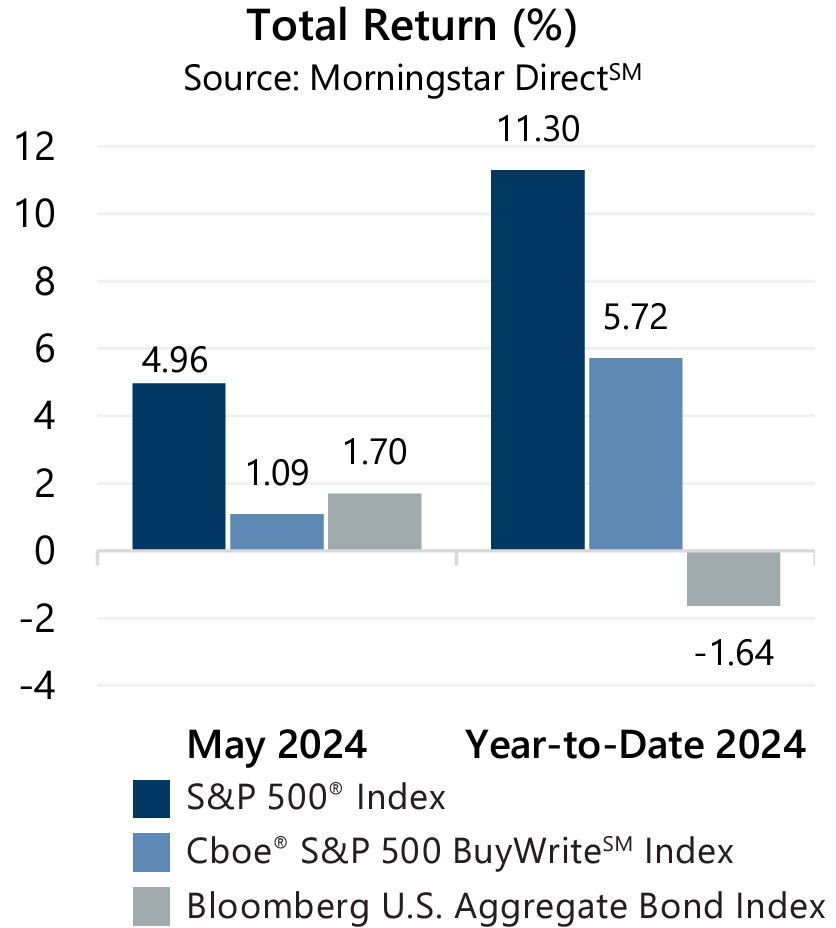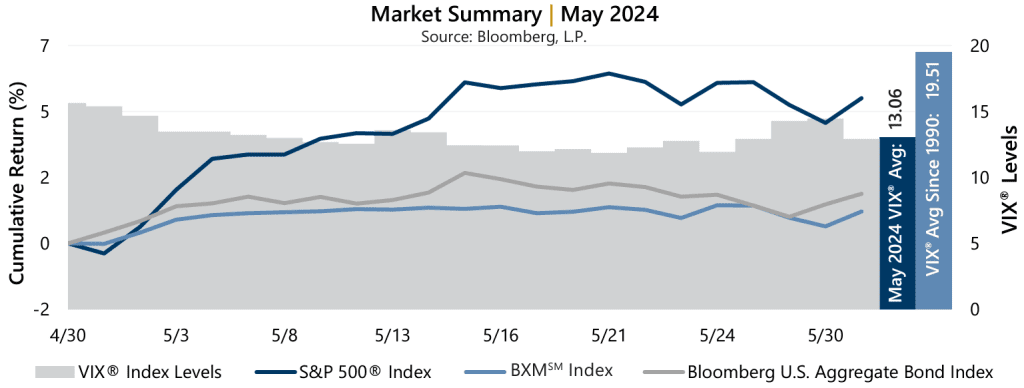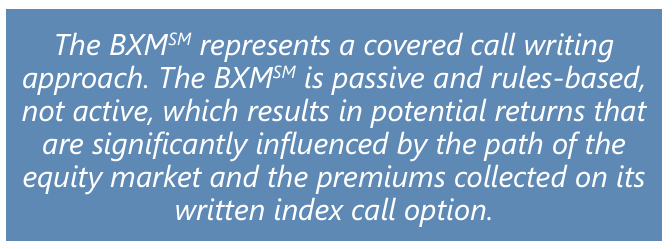 The equity market rebounded from losses in April and reached a new all-time high after a 5.80% advance from the start of the month throug h May 21. Positive but volatile corporate earnings along with a murky outlook for U.S. Federal Reserve (the Fed) activity contributed to softer markets at month-end. From May 21 through May 30, the S&P 500® Index returned -1.60% before climbing 0.81% on the last day of the month.
The equity market rebounded from losses in April and reached a new all-time high after a 5.80% advance from the start of the month throug h May 21. Positive but volatile corporate earnings along with a murky outlook for U.S. Federal Reserve (the Fed) activity contributed to softer markets at month-end. From May 21 through May 30, the S&P 500® Index returned -1.60% before climbing 0.81% on the last day of the month.
Data released in May showed a relatively stable macroeconomic backdrop and some progress on inflation, but not exactly the strongest case for a rate cut or increase in 2024. The second estimate of Gross Domestic Product for the first quarter of 2024 matched the consensus estimate but was lower than the prior estimate. The year-over-year April Consumer Price Index, released May 15, was lower than the previous reading and matched consensus estimates. The quarter-over-quarter PCE Price Index, the Fed favorite, showed an increase of 3.6%, slightly below the prior reading and consensus expectations. Corporate earnings showed some volatility but were relatively strong, with first quarter aggregate operating earnings on track to climb 1.2% quarter-over-quarter and 7.9% year-over-year. With just nearly 95% of S&P 500® Index companies reporting, over 81% have met or exceeded analyst estimates.

Implied volatility, as measured by the Cboe® Volatility Index (the VIX®), averaged 13.06 in May. Consistent with its typical relationship, average implied volatility exceeded realized volatility, as measured by the standard deviation of daily returns for the S&P 500® Index, which was 9.36% for the month. The VIX® ended April at 15.65 and closed at a May high of 15.39 on the first of the month. As the market rallied, the VIX® reached an intra-month low of 11.86 on May 21, a level not seen since 2019. The VIX® closed May at 12.92.

 The Cboe® S&P 500 BuyWriteSM Index1 (the BXMSM) returned 1.09% in May, bringing its year-to-date return to 5.72%. The premiums the BXMSM collected as a percentage of its underlying value provided downside loss mitigation. After April’s equity market decline, the BXMSM entered May with relatively low market exposure which was reset when the BXMSM wrote its new index call option with a June expiration. From the close of April to May 17, the BXMSM returned 1.04% while the S&P 500® Index returned 5.43%. The BXMSM collected a premium of 1.39% when writing its new index option on May 17, which supported returns through the remainder of the month. From May 17 to month-end, the BXMSM returned 0.05% while the S&P 500® Index returned -0.45%.
The Cboe® S&P 500 BuyWriteSM Index1 (the BXMSM) returned 1.09% in May, bringing its year-to-date return to 5.72%. The premiums the BXMSM collected as a percentage of its underlying value provided downside loss mitigation. After April’s equity market decline, the BXMSM entered May with relatively low market exposure which was reset when the BXMSM wrote its new index call option with a June expiration. From the close of April to May 17, the BXMSM returned 1.04% while the S&P 500® Index returned 5.43%. The BXMSM collected a premium of 1.39% when writing its new index option on May 17, which supported returns through the remainder of the month. From May 17 to month-end, the BXMSM returned 0.05% while the S&P 500® Index returned -0.45%.
The Bloomberg U.S. Aggregate Bond Index returned 1.70% in May, bringing its year-to-date return to -1.64%. The yield on the 10-year U.S. Treasury Note (the 10-year) ended April at 4.68% and reached a May high of 4.63% on May 1. The 10-year reached a low of 4.34% on May 15 before closing the month at 4.50%. In a historical inversion that has persisted since July 5, 2022, the yield on the 2-year U.S. Treasury Note exceeded that of the 10-year for the month.
1The BXMSM is a passive total return index designed to track the performance of a hypothetical buy-write strategy on the S&P 500® Index. The construction methodology of the index includes buying an equity portfolio replicating the holdings of the S&P 500® Index and selling a single one-month S&P 500® Index call option with a strike price approximately at-the-money each month on the third Friday of the standard index-option expiration cycle and holding that position until the next expiration.
Sources: Morningstar DirectSM, Bloomberg, L.P. Performance data shown represents past performance and is no guarantee of, and not necessarily indicative of, future results.
For more information and access to additional insights from Gateway Investment Advisers, LLC, please visit www.gia.com.


